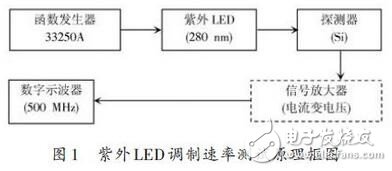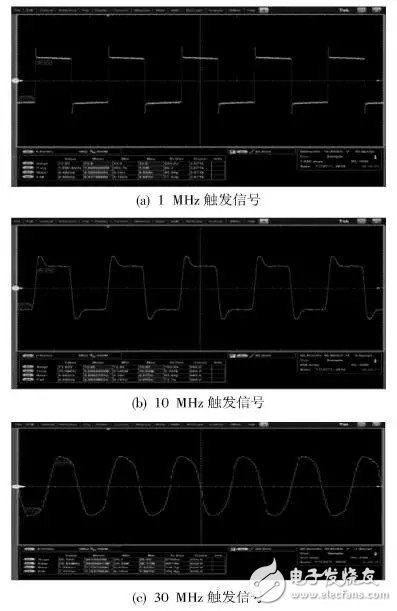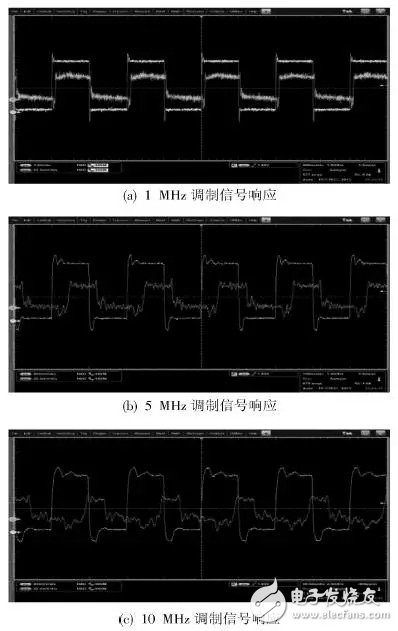At present, ultraviolet light source has been widely used in medical sterilization, fluorescence spectroscopy, biological analysis/detection, water treatment, etc. The bactericidal properties of ultraviolet light source were discovered in the early 17th century, and the application of ultraviolet fluorescent tube technology began in the 1750s. The ultraviolet light sources used in these technologies are gas discharge lamps (such as low-pressure mercury lamps).
Advantages of UV LED communication
In terms of communication, the speed of ultraviolet light communication is far less than that of visible light communication, but ultraviolet light is used as invisible light. Communication has the unique advantages of low resolution, low eavesdropping rate and high confidentiality. 1 low resolution: ultraviolet light is invisible light, it is difficult for the naked eye to find the existence of ultraviolet light source; ultraviolet light propagates signals in all directions through atmospheric scattering, so it is difficult to determine the position of the ultraviolet light source from the scattered signal. 2 low eavesdropping rate: due to the strong absorption of atmospheric molecules and suspended particles, the intensity of the ultraviolet light signal is attenuated exponentially. This intensity attenuation is a function of distance. Therefore, the transmission power of the system can be adjusted according to the requirements of communication distance. Its radiated power in the non-communication area is minimized and difficult to intercept.
As a new type of military communication system, UV communication has the advantages of strong anti-interference ability, good confidentiality, non-line-of-sight communication and all-round communication, and has become the focus of research of military technicians at home and abroad. However, conventional ultraviolet light sources (low-pressure mercury lamps) have defects such as large volume, short life, low modulation rate, and fragility, which limit the development of ultraviolet light communication.
In order to solve the problem of ultraviolet light communication source, the Defense Advanced Research Projects Agency (DARPA) launched a project to develop a variable wavelength transistor ultraviolet light emitter in 2002, and successfully developed a day with a wavelength of 274 nm. Blind area ultraviolet light emitting diode (UVED). Compared with low-pressure mercury lamps, UV LEDs have the advantages of small size, long life, low-voltage power supply, and digital modulation.
The excellent properties of UV LEDs have made them useful in the field of UV communication as soon as they are available. In 2005, MIT used a 274nm UV LED manufactured by DARPA as a light source to develop a prototype of UV communication experiments, non-direct view communication, with a communication rate of 200b/s in the range of 100m; Ben Gurion University, Israel Other research institutes such as British Aerospace Systems Inc. and the University of California have also established ultraviolet light communication systems based on ultraviolet LEDs. However, the specific conditions and technical details of their research work are highly confidential.
In 2010, China's first 280nm deep-UV light-emitting diode (UV LED) production line was commercialized and mass-produced in Qingdao Jiesheng Electric Co., Ltd., and the 280nm deep-UV LED module produced by Qingdao Jiesheng Electric Co., Ltd. in 2011 was calibrated. More than 32mW, these research results have promoted the application of UV LEDs in the field of UV communication. In 2010, the modulation rate of the ultraviolet communication system set up by Chongqing University reached 7Mb/s. In 2010, the Space and Applied Research Center of the Chinese Academy of Sciences built an ultraviolet light image transmission experiment system using ultraviolet LED arrays.
UV LED modulation rate characteristics
The technical indicators announced by the UV communication system development unit are system-level parameters, such as data transmission rate, transmission distance and bit error rate; UV LED manufacturers only test the DC parameters of the manufactured products, such as working voltage/current. , peak wavelength and half width. The light source of the ultraviolet light communication system can only realize the data transmission when it is working in the modulation state. The modulation characteristics such as the modulation rate and modulation spectrum of the ultraviolet LED are studied, which will promote the application of the ultraviolet LED in the field of ultraviolet light communication.
(1) Principle of UV LED modulation rate test
The principle of UV LED modulation rate test is shown in the figure below. The experimental equipment is described as follows:

1 Function Generator: Agilent's 33250A is used to generate a standard square wave signal for driving UV LEDs.
2 UV LED: A single 280nm UV LED in T039 package produced by Qingdao Jiesheng Electric Co., Ltd., output power “0.6mWâ€.
3 Detector (Si): The PDA10A EC high-speed detector manufactured by THORLABS is suitable for the wavelength range of 200~1100nm and the response time is 1ns.
4 signal amplifier: The detector used in this experiment has signal filtering amplification effect. If the detector selects current output and has no amplification function, it needs to select the corresponding signal amplifier.
5 digital oscilloscope: Select the Tektronix DP07054 model storage oscilloscope with a bandwidth of 500MHz.
(2) Drive signal test
The function generator 33250A generates a square wave with a rise/fall time of less than 5 ns and a duty cycle of 50%. The technical indicator indicates that a square wave of 80 MHz can be generated. The drive signals at different modulation rates are shown below.

Figure 2 Drive signals at different modulation rates
The experimental results show that the square wave with a frequency of 30MHz is close to a sine wave; the square wave with a frequency of 10MHz has obvious protrusions on the rising/falling edge. The quality of the trigger signal will directly affect the modulation signal of the UV LED. Therefore, a square wave signal generator with high modulation rate and good signal quality must be developed in the later stage as a dedicated driving source for the UV LED.
(3) High speed detector response
The PDA10A EC model detector manufactured by THORLABS is used in this experiment. The applicable wavelength range is 200~1100nm and the response time is 1ns. Theoretically, it can respond to a square wave signal with a frequency of 500MHz and a duty cycle of 50%.
The experimental results are shown in the figure below. The curve with higher amplitude is the driving signal, and the curve with lower amplitude is the detector response. Figure (c) shows that the high-speed detector can accurately detect the 10MHz modulated signal of the UV LED. Therefore, the use of ultraviolet LEDs as a source of ultraviolet light communication can increase the data transmission rate to 10 Mb/s, and it is expected to obtain better results by using a dedicated ultraviolet LED driving power source.

Figure 3 Response curve of high-speed detectors to different modulation frequency signals
UV LED modulation spectral characteristics
The half-wave width of the UV LED in the DC state is generally less than 12 nm. To verify the spectral characteristics of the UV LED under the modulation state, the 280 nm UV LED of Qingdao Jiesheng Electric Co., Ltd. was tested by the modulation spectrum. The test principle is shown in the figure below.

The main equipment parameters are as follows:
(1) Function generator, ultraviolet LED: same as the device used in Fig. 1.
(2) UV spectrometer: using iHR550 spectrometer produced by Horiba Jobin Yvon, the spectral range is 200~1100nm, the spectrometer resolution is 0.025nm; the spectral accuracy is ±0.2nm; the repeatability is ±0.075nm.
The spectral characteristics of the ultraviolet LED at different modulation rates are shown in the figure below. When the frequency is 50 Hz and 80 Hz, the spectrum of the modulation state is quite different from that of the DC state, because the sampling frequency of the ultraviolet spectrometer is larger than the ultraviolet LED modulation frequency.

Figure 5 Spectrum of UV LEDs at different modulation rates
When the modulation frequency (100 Hz) of the ultraviolet LED is greater than the sampling frequency of the ultraviolet spectrometer, the ultraviolet LED spectrum curve obtained under the modulation state obtained by the ultraviolet spectrometer is substantially the same as that under the direct current state.
The experimental results show that the UV LED can maintain its spectral characteristics well under the modulation state, and ensure that the spectrum under DC working condition can be applied to the UV communication system in the range of the day blind zone.
in conclusion
Ultraviolet LED has the characteristics of small size, long life, low voltage power supply, etc. It is suitable for use as an ultraviolet light communication source. In this paper, the experimental research on the modulation rate and modulation spectrum of UV LED has been carried out. The results show that the modulation rate of UV LED can reach 10MHz, and the modulation state can maintain its spectral characteristics well. These experimental data are UV LED in UV communication. Domain applications provide powerful data support. Ultraviolet LEDs will be widely used in the fields of ultraviolet radiation and ultraviolet communication in the near future.
Home Theater Speakers ,Home Speakers , 2.1 channel Speakers , 4.1 channel Speakers,5.1 channel Speakers
Newmax Electronics Co.,LTD , https://www.fspeaker.com